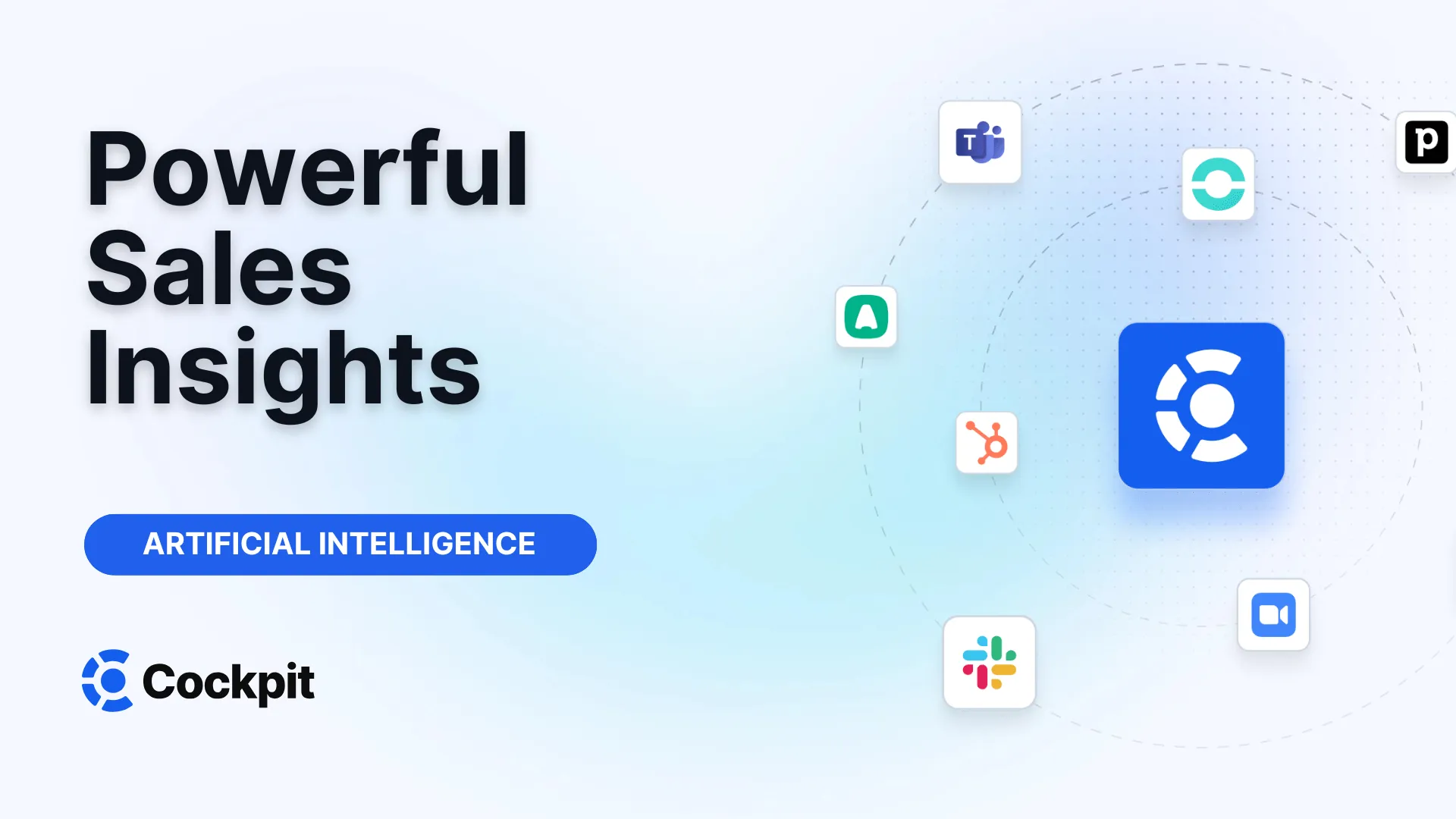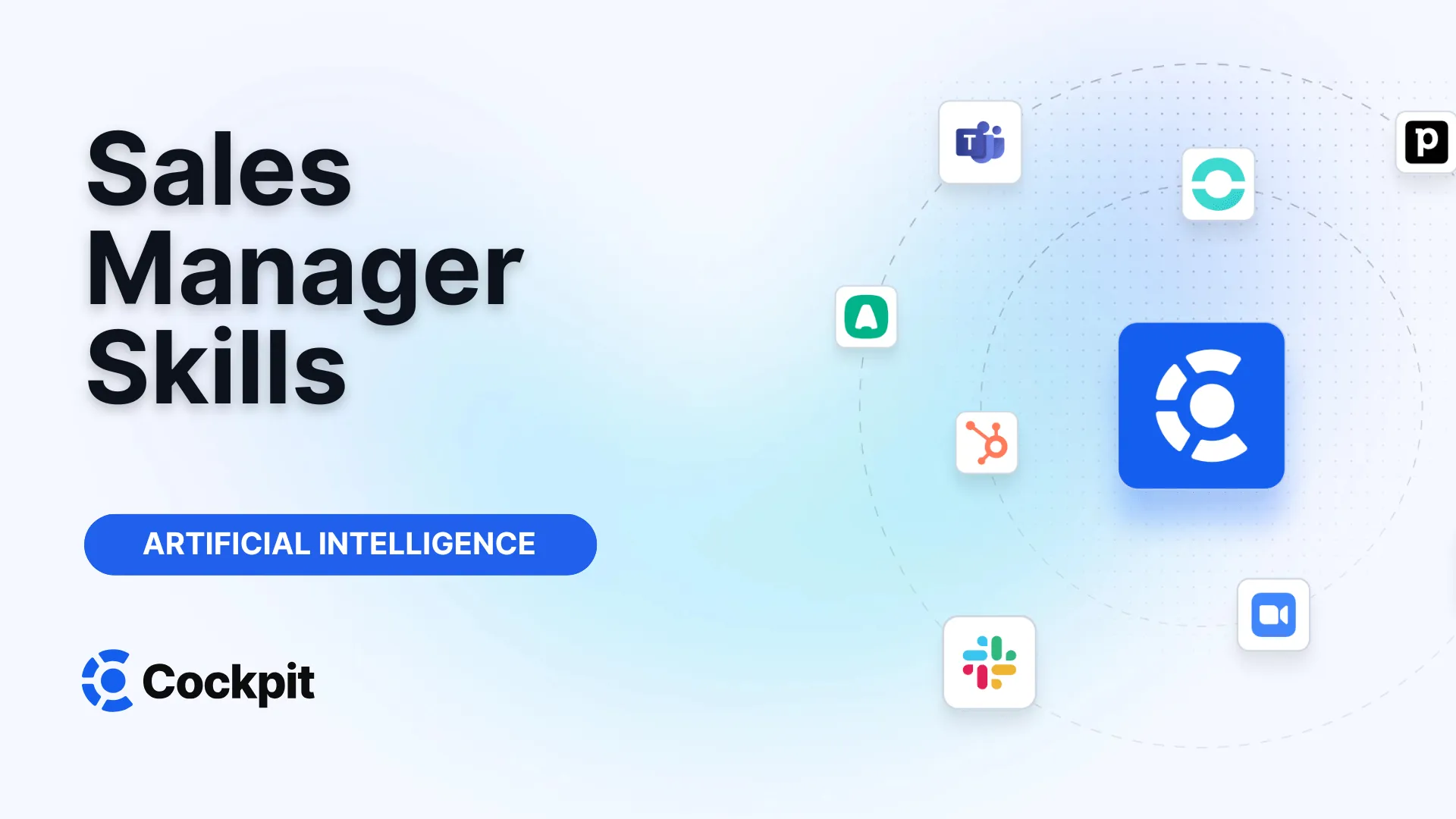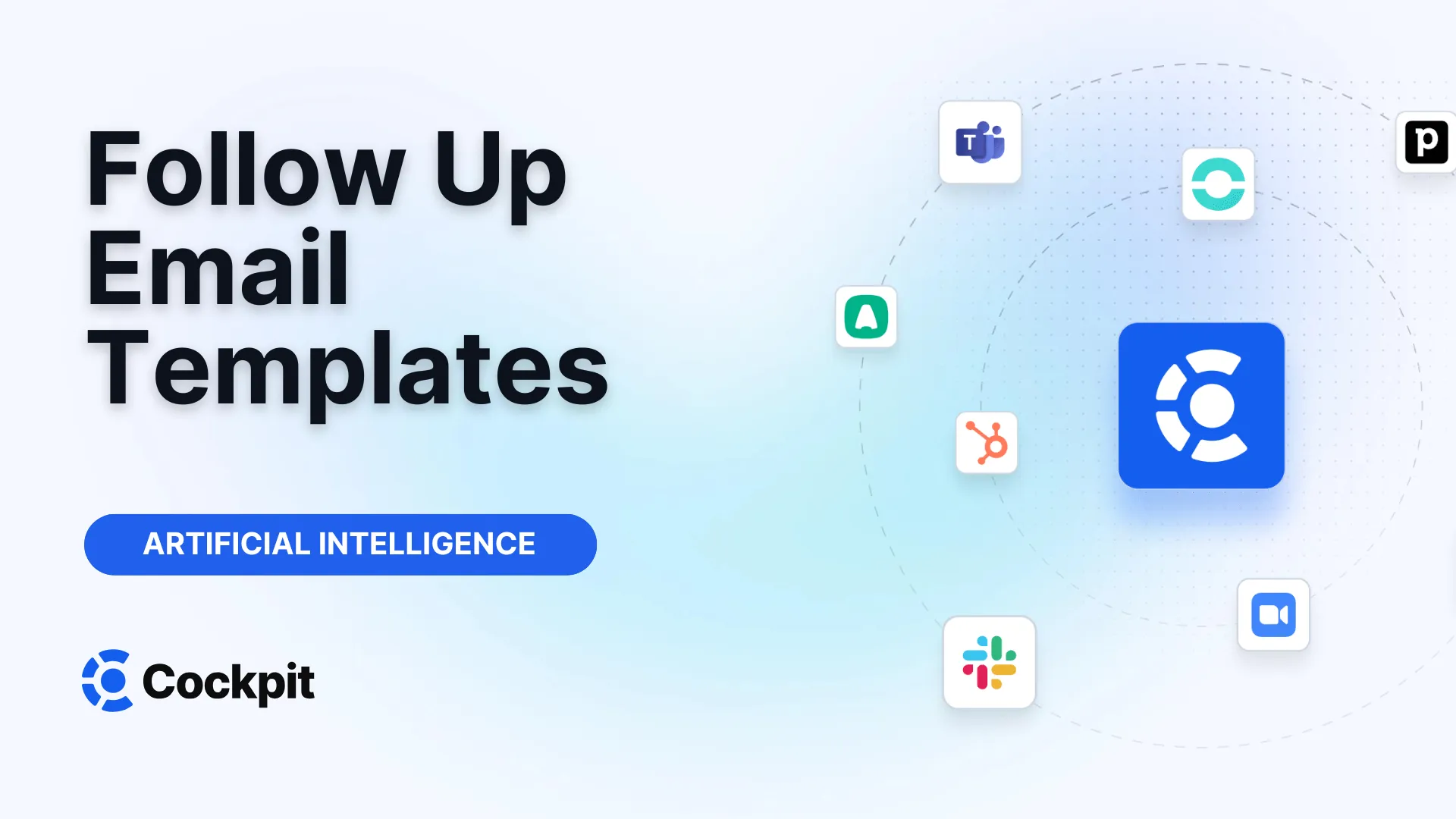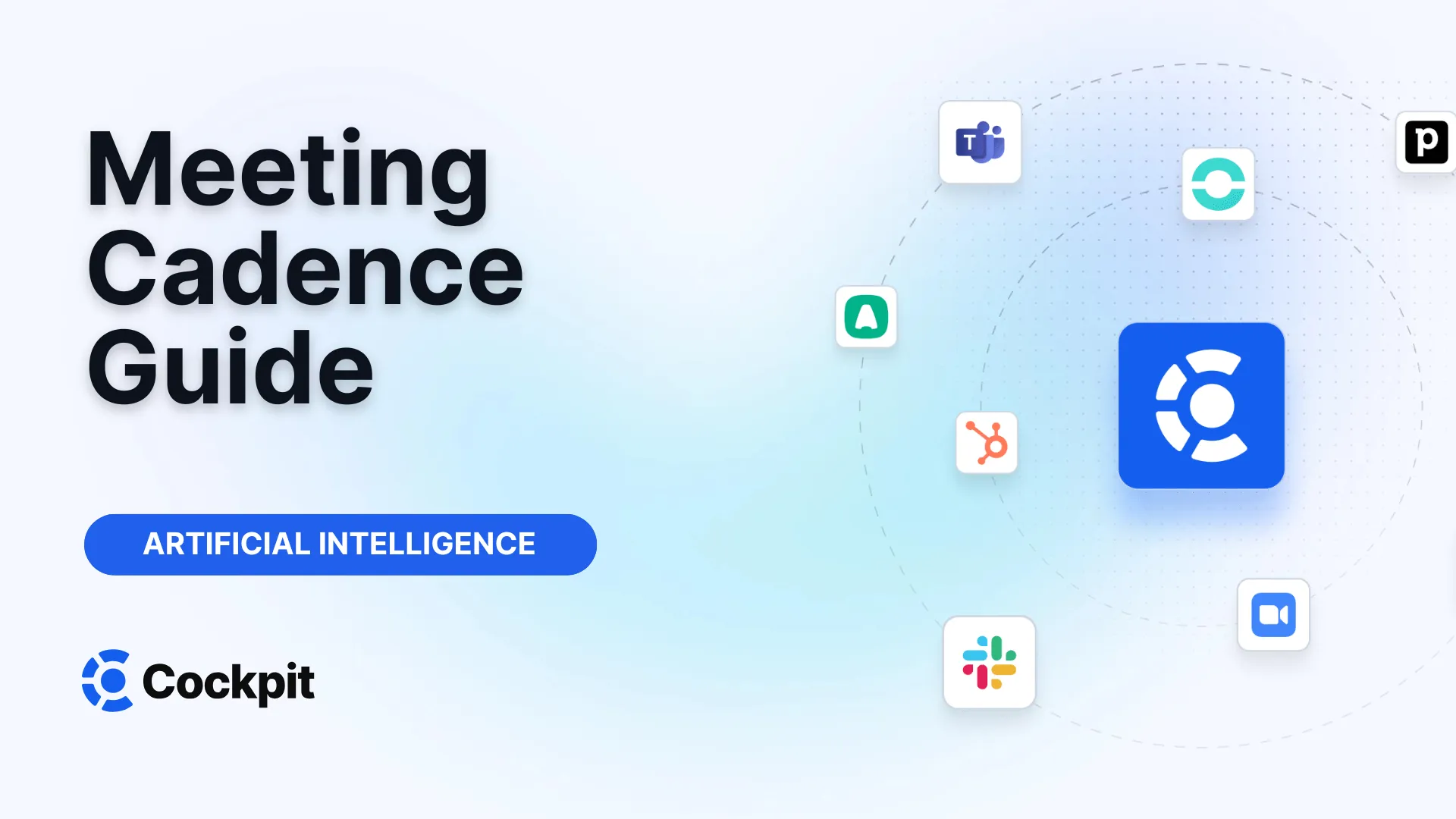Optimize your sales force in just a few clicks

Thousands of sales teams boost their performance with Cockpit. Why shouldn't you?
Explore CockpitSummary
Do you ever find yourself navigating your sales efforts blindly, hoping that your strategies will pay off? What if every decision, from revenue forecasting to coaching your teams, was based on reliable, actionable data? If sales analysis brings to mind endless spreadsheets and hours spent compiling numbers, it’s time to rethink your approach. Modern sales analysis software has transformed this tedious task into a strategic growth lever. They no longer just present numbers; they tell a story, reveal hidden trends, and guide you toward the most profitable actions.
Far from being simple calculators, these intelligent tools become true partners for sales directors and their teams. They allow you to understand not only what happened but also why it happened and how to replicate success. By harnessing the power of data, you can finally abandon guesswork to build a predictable, efficient, and constantly improving sales machine. This guide will help you understand how these platforms can transform your operations and how to choose the one that perfectly matches your ambitions.
What is a Sales Analysis Software?
A sales analysis software is a platform designed to collect, process, and visualize data coming from your sales processes. Its primary goal is to transform large volumes of raw data into clear, actionable information to identify winning strategies, discover growth opportunities, and optimize overall company performance. According to a study, 63% of companies believe data analysis leads to improved efficiency and productivity.
These tools answer crucial questions for any sales leader:
- Who are my best salespeople and what are their methods?
- Do we realistically have a chance to meet our targets this quarter?
- Is our sales pipeline filled with quality opportunities?
- What are the behavioral trends of our clients?
By centralizing data, a sales analysis software helps you create detailed reports, evaluate the effectiveness of your current processes, track individual and team performance, and produce accurate forecasts based on intelligent analysis. It allows you to keep an eye on key performance indicators (KPIs) and maximize your company’s growth potential by making informed, rather than intuitive, decisions.
Essential Features of Sales Analysis Tools
When looking for a tool to enhance your analytical capabilities, certain features are indispensable. They form the foundation of an effective platform that will have a positive and measurable impact on your revenue.
Dashboards and Visual Reports
The ability to visualize data is fundamental. A good tool must offer dashboards, charts, and visual reports to illustrate your sales performance. This visualization helps monitor trends, compare periods, and obtain relevant insights effortlessly. The most advanced platforms provide a consolidated view that brings together pipeline metrics, top opportunities, and weekly updates, offering a 360° real-time view. Customization is also key: you should be able to create role-based dashboards so that every team member accesses information relevant to them directly.
Intelligent Analysis and Forecasting
Today’s best software goes beyond simple reporting. They integrate artificial intelligence (AI) to provide predictive analytics. These tools analyze historical data to predict the probability of closing a deal, identify high-growth potential accounts, or anticipate risks.
"A deep understanding of sales processes can help optimize them to positively impact your business."
This intelligence also appears as contextual recommendations. For example, a platform can analyze sales conversations to identify topics that generate the most engagement or the most frequent objections. This is where tools like Cockpit stand out. Beyond numerical analysis, our platform analyzes the content of your calls to evaluate the adoption of your sales methodology (with the AI Playbook) and provide coaching insights. This conversational intelligence transforms every exchange into a valuable data source.
Pipeline Tracking and Management
Complete visibility over your sales pipeline is non-negotiable. The tool must allow you to monitor opportunities at every stage, from initial contact to closing. Features such as visual pipeline tracking, customizable stages, and alerts about opportunity health are essential. Modern software uses visual signals to indicate at-risk deals, those that have progressed, or those that are stagnant. This enables managers to coach their teams proactively and focus on actions that move deals forward.
The 5 Major Benefits of a Sales Analysis Platform
Adopting a powerful sales analysis tool offers a multitude of advantages that go far beyond merely creating reports. These platforms become the engine of your sales strategy.
- Unlock Accurate Predictive Analytics
The predictive analytics market is expected to generate over $22.1 billion by 2026, reflecting the increasing adoption of this forecasting model. By analyzing historical data, these tools enable you to make much more reliable revenue projections. When your goals are realistic and data-driven, your teams are more likely to achieve them, resulting in higher profitability and better resource planning. - Optimize Your Sales Funnel Management
Every stage of your sales funnel must be monitored and optimized to increase your overall conversion rate. A good analysis software helps you track conversion rates per stage, pinpointing exactly where you lose the most opportunities. Equipped with this information, you can take targeted actions to correct weaknesses, whether improving your demo script, adjusting your follow-up strategy, or better training your teams on objection handling. - Make Better Informed Business Decisions
Sales analysis helps you discover the most effective strategies and techniques that generate positive results. By learning from data and historical trends, you can improve your decision-making. The deep insights provided by these tools help you identify obstacles and make data-driven decisions that support your revenue growth rather than relying on instinct.
Note
The quality of your predictions depends entirely on the quality of your data. The “garbage in, garbage out” principle applies perfectly here. Before deploying an advanced analysis tool, ensure your CRM is clean and data entry is consistent. Automation tools like Cockpit, which automatically synchronize call notes and key information into the CRM, are an excellent way to guarantee this quality.
- Improve Team Productivity and Coaching
Sales analysis determines whether your operations yield the expected results. You can identify actions that generate the best outcomes and integrate them more into your sales strategies. But productivity is not limited to analysis. Platforms like Cockpit go further by automating time-consuming administrative tasks such as taking meeting notes and updating the CRM. This freed-up time allows salespeople to focus on selling. Additionally, by recording and analyzing calls, managers have objective material for targeted coaching, helping new hires ramp up faster and experienced salespeople refine their pitch. - Analyze Customer Behavior and Trends
Gain complete visibility into the context of your prospects. Where do they come from? What are their needs and expectations? How can you best help them? These questions are answered by a comprehensive analysis solution that provides richer insights into your prospects. It can analyze data to identify the actions that move them forward in the sales cycle, helping you personalize your approach and strengthen client relationships.
Comparative Overview of Leading Sales Analysis Software
The market offers a plethora of solutions, each with strengths and weaknesses. To help you see clearly, here is a comparative analysis of the most popular options, as well as a presentation of how our solution positions itself.
| Tool | Key Feature | Ideal For | Pricing Model |
|---|---|---|---|
| Salesforce Sales Cloud | AI analysis (Einstein) and advanced forecasting | Companies seeking an all-in-one, integrated, scalable platform | From $25/user/month |
| HubSpot Sales Hub | Data centralization (sales, marketing, service) | SMBs wanting an integrated ecosystem for all customer operations | Free plan available, paid from $45/month |
| Zoho CRM | Visual analysis capabilities (cohorts, maps) | Companies seeking advanced customization at an affordable price | Free plan available, paid from $14/user/month |
| Pipedrive | Interactive dashboards and pipeline focus | Pure sales teams needing a simple, visual tool | From $9.90/user/month |
| BIGContacts | Pre-built reporting templates and ease of use | Small teams needing simple and efficient pipeline analysis | Free plan available, paid from $9.99/user/month |
| Cockpit | AI conversational analysis and CRM automation | Teams wanting to transform calls into actionable data for coaching and strategy | Free trial available, paid plans on request |
Established Market Players
- Sales Cloud Einstein: Salesforce’s solution is a heavyweight in the industry, offering AI-based analytics to predict deal closures and provide recommendations. Its dashboards come pre-built for quick analysis, but the learning curve can be steep. Ideal for large organizations with complex needs.
- HubSpot Sales Hub: Known for its integrated ecosystem, HubSpot centralizes sales, marketing, and service data. Its analytics tools allow easy data sorting and creation of effective sales playbooks. It’s an excellent choice for companies already using the HubSpot suite.
- Zendesk Sell: Integrated into Zendesk’s support suite, this tool offers strong reporting capabilities to track sales performance. It allows creation of custom reports and revenue forecasting, though some users find its dashboard a bit cluttered.
- Pipedrive: Focused on simplicity and pipeline visualization, Pipedrive features interactive reporting dashboards to uncover winning insights and actions. It is particularly appreciated by sales teams seeking a straightforward and effective deal management tool.
Specialized Challengers
- Freshsales: Offered by Freshworks, this CRM provides deep analytics to track pipeline velocity and individual performance. Its dynamic forecasts and customizable reports make it a solid option for SMBs.
- Copper: Designed for companies using Google Workspace, Copper offers excellent pipeline visibility. Its analytic dashboard tracks relevant data, although its features are more limited outside the Google ecosystem.
- Nutshell: This CRM focuses on sales automation and offers customized reports to track progress toward goals. It helps analyze conversion rates by sales funnel stage to identify friction points.
Warning
Many tools promise "intelligent" analytics, but their effectiveness depends on the depth and nature of the analysis. A platform that only projects past numbers does not offer the same level of insight as one that analyzes the content of your interactions. Before choosing, request a demonstration to see concretely what type of intelligence is offered.
Cockpit: The AI Assistant for Enhanced Sales Intelligence
Where most tools analyze the results (the "what"), Cockpit focuses on analyzing the interactions that produce those results (the "why" and the "how"). Our platform integrates with your videoconferencing and telephony tools to automatically record, transcribe, and summarize every customer conversation.
This unique approach adds a new dimension to sales analysis:
- CRM Data Entry Automation: No more missing or inconsistent data. Cockpit automatically pushes personalized summaries, next steps, and key fields into your CRM, ensuring a single, reliable source of truth for your analyses.
- Fact-Based Coaching: Our AI Playbook objectively evaluates each call against your sales methodology. Managers can quickly identify strengths and improvement areas, using video clips and playlists to share best practices.
- Qualitative Insights: Beyond numbers, understand customers’ recurring objections, most requested features, and arguments that resonate. It’s a goldmine to refine your pitch and product strategy.
By combining performance analysis with conversational intelligence, Cockpit does not just show you where you stand; it gives you the keys to continuously improve.
How to Choose the Right Sales Analysis Software for Your Company?
Selecting the most suitable solution requires thorough reflection on your specific needs. Here is a step-by-step approach to guide you.
Define Your Objectives and Pain Points
Before even looking at features, ask yourself: what problem are you trying to solve?
- Are your forecasts always inaccurate? Look for a tool with advanced forecasting capabilities.
- Do you spend too much time manually updating your CRM? A solution with strong CRM automation like Cockpit should be a priority.
- Is onboarding and upskilling new salespeople too slow? A platform with coaching and best practice sharing features will be a great asset.
- Are you lacking visibility into your team’s performance? Customizable dashboards are indispensable.
Evaluate Ease of Use and Scalability
The best tool in the world is useless if your team doesn’t adopt it. The interface must be intuitive and deployment rapid. Look for a solution that doesn’t require months of training. Furthermore, think about the future. Can the tool grow with your business? Can it handle more users, more data, and new integrations as your needs evolve?
Expert Tips
Don’t rely solely on marketing brochures. Take advantage of free trials and personalized demos. This is the best way to test the tool in your real work environment. Prepare a list of use cases specific to your business and see how the platform addresses them. At Cockpit, we offer a free trial and demonstrations so you can see firsthand the value of automation and conversational analysis.
Verify Essential Integrations
Sales analysis software does not operate in isolation. It must integrate seamlessly with your existing technology ecosystem. The most critical integration is with your CRM (Salesforce, HubSpot, etc.). Make sure data synchronization is two-way and reliable. Also consider other tools your team uses daily: videoconferencing tools (Zoom, Google Meet, Teams), telephony platforms, messaging apps (Slack), and email solutions. Native integration is always preferable to guarantee a smooth experience.
Eliminating approximation from your sales operations is no longer optional but a necessity to stay competitive. Sales analysis tools are the bridge between raw data and strategic growth, transforming your teams into a more effective and better-informed sales force. Whether you want to improve forecast accuracy, optimize your pipeline, or enhance coaching, there is a solution tailored for you. By focusing on ease of use, personalization, and increasingly, conversational artificial intelligence, you can choose a platform that not only reports data but generates value from every interaction. For companies ready to harness the richness of their customer conversations, exploring a solution like Cockpit may well be the next big step toward sales excellence.
How Can Sales Analysis Software Improve the Quality of My CRM Data?
This is an excellent question, as CRM data quality is often the Achilles’ heel of many sales teams. Sales analysis software, especially those with automation features, improves this quality in several fundamental ways:
- Automated Data Entry: The most common cause of poor-quality data is manual entry, which is prone to errors, omissions, and inconsistencies. Tools like Cockpit eliminate this issue by automatically recording key information (call summaries, next steps, amounts, dates) directly into the right CRM fields after each meeting.
- Data Standardization: Using customizable summary templates ensures that information is structured in the same way for every type of interaction (discovery call, demo, etc.). This makes data much easier to analyze and compare on a large scale.
- Qualitative Enrichment: CRM data often contains quantitative data (deal value, stage) but lacks qualitative context. By synchronizing call summaries or even links to key moments in recordings, the analysis software adds a “human” understanding layer to each opportunity. A manager can thus grasp the why behind the deal status without interviewing the salesperson.
- Real-Time Updates: Data is pushed to the CRM immediately after interaction, ensuring that managers and other team members always work with the most current information. This makes pipeline forecasts and reports instantly more reliable.
In short, by acting as an automated, intelligent bridge between your salespeople’s conversations and your CRM, good sales analysis software transforms it from a simple administrative database into a true strategic source of truth for your company.




